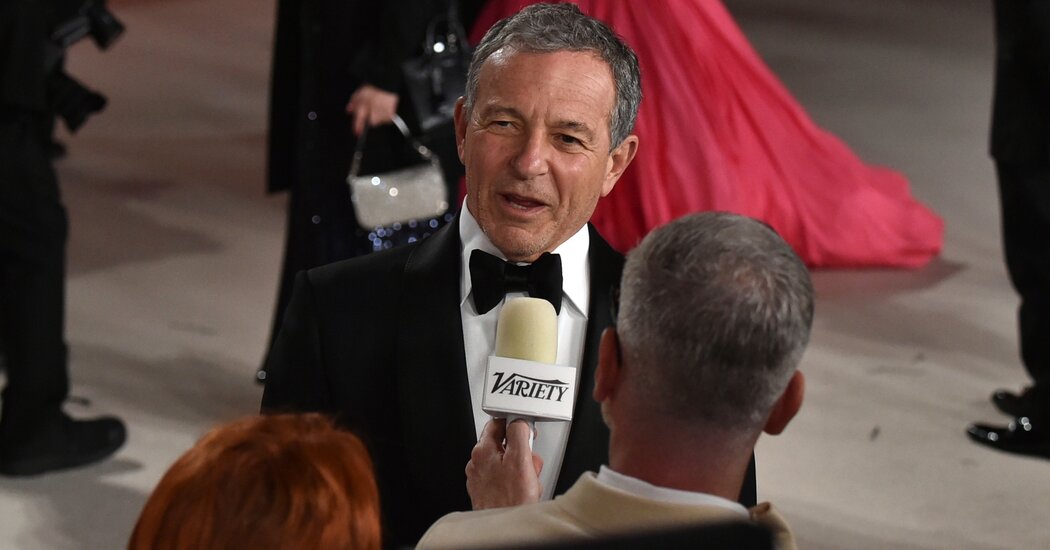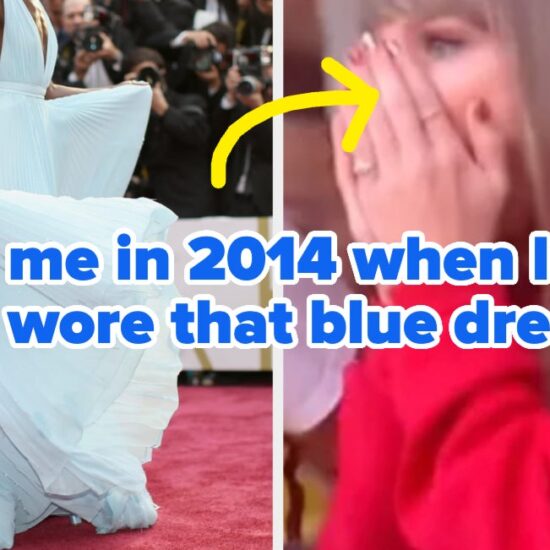
To understand the forces that have been roiling the biggest media companies, look no further than Disney’s earnings. Streaming economics are improving — considerably so. But not fast enough to offset declines in traditional television, which is in free fall.
Disney said on Wednesday that losses in its streaming business for the most recent quarter totaled $659 million, an improvement from a year earlier (and a vast improvement from the October-to-December period, when losses totaled $1.1 billion). Streaming revenue climbed 12 percent, reflecting a sharp increase in revenue per paid Disney+ subscriber, a metric investors watch closely.
The problem: Disney still relies on old-line TV channels for a colossal portion of its profit — and those outlets are being maimed by cord cutting, sports programming costs and advertiser pullback. Disney’s linear networks (ESPN, Disney Channel, ABC, National Geographic, FX) reported $1.8 billion in operating income, down 35 percent from a year earlier. Revenue fell 7 percent.
Robert A. Iger, Disney’s chief executive, called the decline of traditional television “a worrisome circumstance” in an earnings-related conference call with analysts. Disney shares fell by more than 4 percent in after-hours trading on Wednesday.
As part of its push toward streaming profitability, Disney announced that content from Hulu would be made available on Disney+ to subscribers of both services in the United States. Mr. Iger said this “one app experience” would roll out by the end of the year. Hulu, which does not operate overseas, will also continue as a stand-alone product.
Disney+ content is primarily aimed at children and families. The addition of more generalized Hulu content would “increase engagement and increase our opportunity in terms of serving digital ads — growing our advertising business,” Mr. Iger said.
Disney said it would raise the price for ad-free subscriptions to Disney+ later this year, in part to push more viewers toward cheaper subscriptions that allow for advertising (which, in turn, would allow Disney to increase advertising rates). Disney most recently raised the ad-free price in December: Those subscriptions now cost $11, up 38 percent from what Disney previously charged. The option with advertising costs $8.
Disney owns 67 percent of Hulu, with Comcast holding the balance. Under a 2019 agreement, Disney has an upcoming opportunity to buy out Comcast. (Estimates start in the $9 billion range.) Mr. Iger indicated on Wednesday that Disney would like to make that deal.
“We’ve had some conversations with them already,” he said. “I can’t really say where they end up.” Mr. Iger notably started the conference call by congratulating Comcast, an archrival, on the success of its animated “Super Mario Bros. Movie,” which has collected $1.2 billion worldwide.
Disney+ subscriber counts have abated over the past six months, in part because Disney has pulled back on expensive “subscriber acquisition” efforts — marketing campaigns that try to persuade people to subscribe. Disney+ now has about 158 million subscribers worldwide, a 2 percent decline from December, with most of the loss coming from ultra-low-priced subscriptions in India. Disney+ peaked with 164 million subscribers in October.
Disney had 231.3 million subscriptions across Disney+, Hulu and ESPN+ in the quarter, down from 234.7 million in December.
Unlike most of its competitors, Disney has a safety net in the form of theme parks. Operating profit in the company’s Parks, Experiences and Products division climbed 22 percent, to $2.2 billion, as Disney resorts in Shanghai and Hong Kong finally began to recover from the pandemic. Disneyland Paris continued its attendance surge, which started last summer with the opening of a Marvel-themed expansion.
Attendance also increased at Disney World in Florida and Disneyland in California, although higher costs — the introduction of a new “Tron”-themed roller coaster, for instance — dented profitability in Florida. Disney Cruise Line bookings were strong, partly because of a recent expansion of its fleet, the company said.
It was Disney’s first full quarter under the second reign of Mr. Iger, who returned as the chief executive in November. He replaced Bob Chapek, who was ousted by the board following a series of blunders, including the company’s response to contentious education legislation in Florida. The fallout from that matter has led to a legal battle with Gov. Ron DeSantis over Disney World’s future expansion and oversight.
On Wednesday, Mr. Iger said the company was “evaluating where it makes the most sense to direct future investments” for theme park construction, a clear reference to the standoff in Florida. Disney said last month — before the deteriorating situation with Mr. DeSantis — that it had earmarked $17 billion for Disney World expansion projects over the coming decade.
When asked by analysts about the tense situation in Florida, Mr. Iger reiterated that Disney viewed it as unconstitutional retaliation for its opinion on the education legislation.
As a whole, Disney generated $21.8 billion in sales, a 13 percent increase compared with last year, slightly surpassing analyst projections. Disney reported earnings per share of 93 cents, excluding certain items affecting comparisons, on par with analyst expectations.
Disney is in the midst of eliminating roughly 7,000 jobs, or roughly 4 percent of its global total, as part of a campaign to cut costs by $5.5 billion. There have been two rounds of layoffs so far; the final round is expected by the end of the month.
The company continues to pour money into original Disney+ programming. The third season of “The Mandalorian” arrived on the service in March. Another lavish series set in the “Star Wars” universe, “Ahsoka,” is scheduled to roll out on Disney+ this summer.
At the same time, however, Disney said it would begin removing some content from its streaming services, particularly in overseas markets where growth potential is limited. It did not give any examples of the content. Because content costs are amortized over time, early removal would cost Disney up to $1.8 billion. But the move will save Disney money over the long term because the company will not need to pay residual fees (a type of royalty) to show creators.













